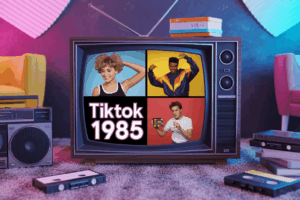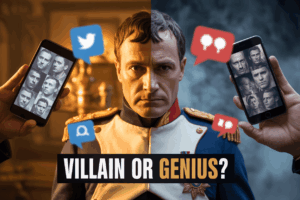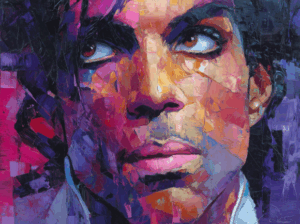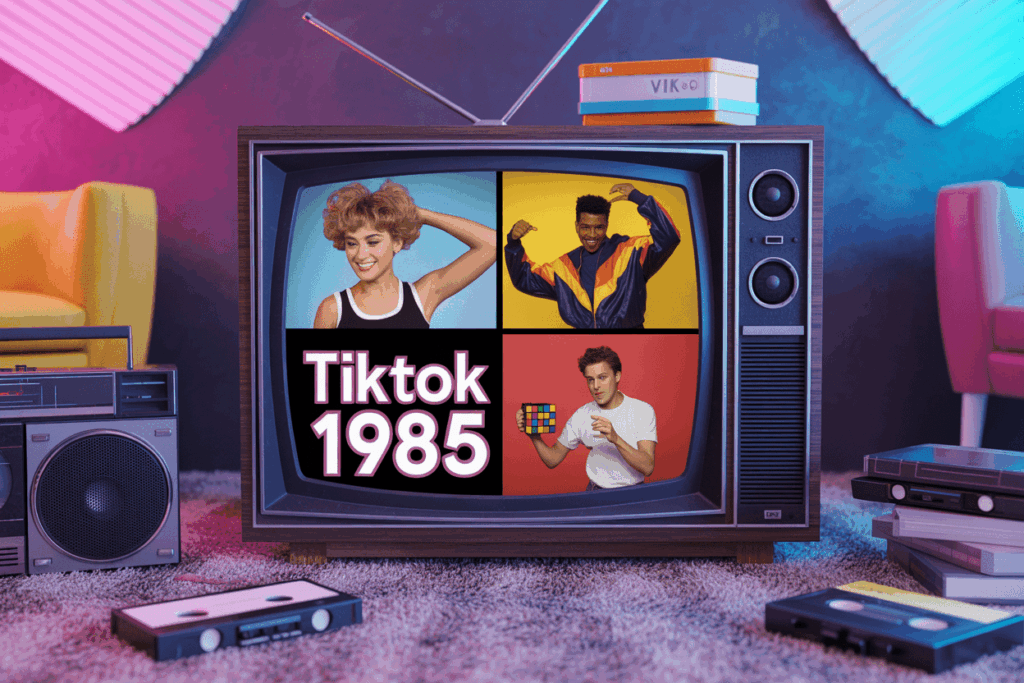
Imagine scrolling through TikTok in 1985 — what kind of content would have everyone double-tapping and sharing like crazy? This exploration is perfect for pop culture enthusiasts, social media lovers, and anyone curious about how viral trends might have looked in the Reagan era.
The year 1985 was packed with moments that would have been absolute gold for TikTok creators. From Madonna’s “Like a Virgin” era to the premiere of Back to the Future, 1985 TikTok viral content would have been wildly different from today’s dance trends and life hacks.
We’ll dive into how 1980s pop culture moments like Live Aid and the launch of Nintendo would have sparked millions of views and countless remixes. You’ll also discover which 1980s fashion trends — think shoulder pads, neon colors, and big hair tutorials — would have created the most addictive style challenges on the platform.
Finally, we’ll explore how everyday 1980s technology trends like the rise of personal computers and VHS players could have become the life hacks and unboxing videos of their time, showing just how retro TikTok challenges might have shaped an entire generation’s social media habits.
Pop Culture Phenomena That Would Have Dominated 1985 TikTok
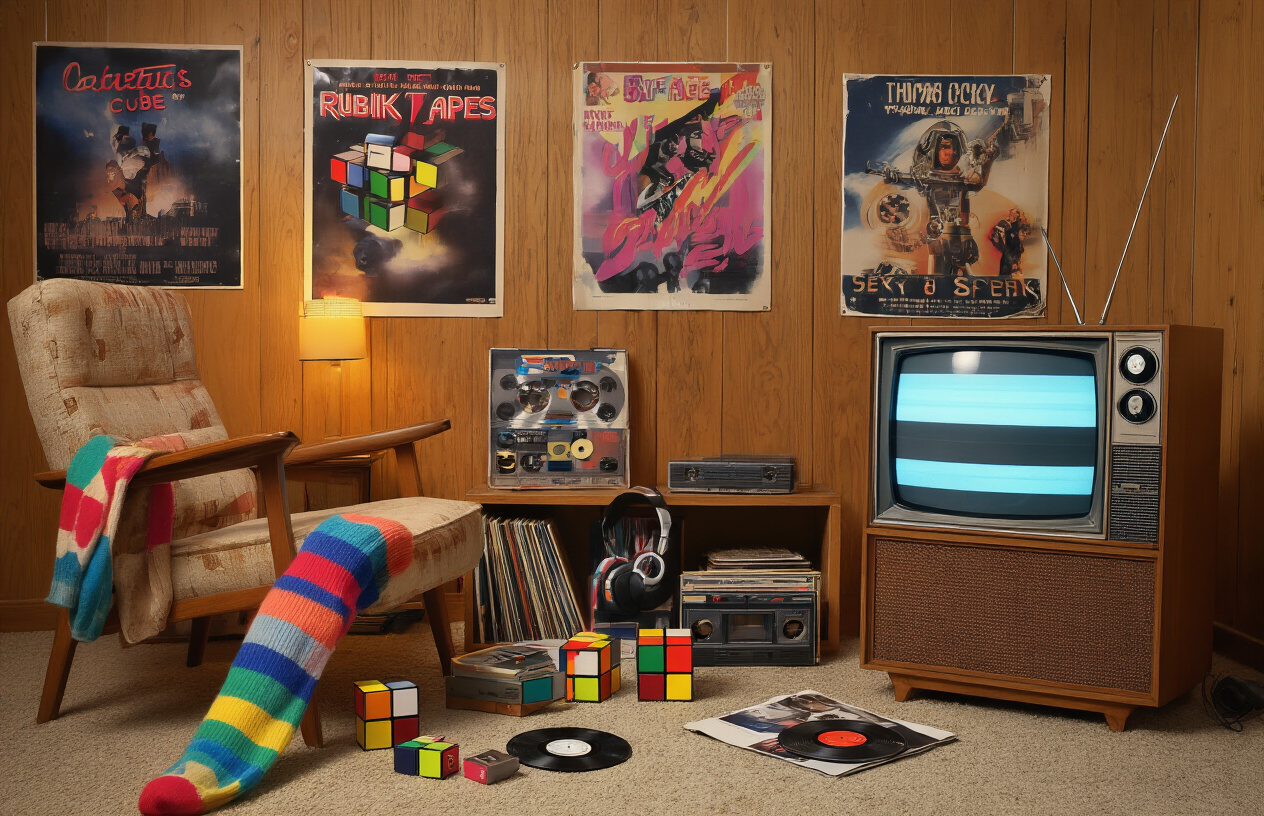
Madonna’s Bold Fashion Statements and Dance Moves
The Material Girl would have owned 1985 TikTok with her revolutionary fashion choices and provocative dance routines. Picture millions of users attempting to recreate her iconic “Like a Virgin” performance looks – the wedding dress with “Boy Toy” belt buckle, layered crucifixes, and fingerless lace gloves. Fashion hauls featuring Madonna’s signature style would have flooded feeds, with fans showing off their attempts at the “Madonna look” complete with teased hair, dark eye makeup, and rosaries worn as accessories.
Dance challenge videos would have exploded around her choreography from “Material Girl” and “Like a Virgin.” The gyrating hip movements and sultry poses that scandalized conservative audiences would have become the backbone of countless viral dance trends. Young creators would have filmed themselves mastering her signature moves in bedrooms and school hallways, spreading 1985 pop culture moments faster than MTV could broadcast them.
Michael Jackson’s Moonwalk Tutorial Videos
The King of Pop’s gravity-defying moonwalk would have sparked the most replicated dance tutorial trend in 1985 TikTok viral content history. Following his legendary Motown 25 performance, amateur dancers would have flooded the platform with step-by-step breakdowns of the move. These tutorials would range from slow-motion analyses of foot placement to hilarious failed attempts that would have garnered millions of views.
Professional dancers and self-proclaimed experts would have created detailed instructional series, breaking down the moonwalk into manageable segments. The comment sections would buzz with tips, tricks, and encouragement as users shared their progress videos. Dance studios and street performers would have capitalized on the trend, offering “learn the moonwalk” content that would have gone viral overnight.
Back to the Future Movie References and Recreations
The time-traveling DeLorean would have inspired countless Back to the Future viral content recreations and parodies. Fans would have created elaborate setups mimicking the iconic car scenes, complete with cardboard DeLoreans and creative special effects using available 1980s technology. The “1.21 gigawatts” line would have become a trending sound bite, appearing in thousands of videos across different contexts.
Costume recreations would have dominated fashion content, with users showing off their attempts at Marty McFly’s signature vest and Nike shoes, or Doc Brown’s wild white hair and lab coat. The movie’s memorable quotes would have been endlessly remixed and referenced, creating a cultural phenomenon that extended far beyond the original film.
Live Aid Concert Behind-the-Scenes Moments
Live Aid would have transformed into the ultimate 1980s social media trends goldmine, with concert-goers sharing exclusive backstage glimpses and crowd reactions. Fans would have captured Queen’s legendary performance from unique audience angles, creating a treasure trove of user-generated concert content. The emotional impact of seeing starving children in Ethiopia juxtaposed with rock stars’ performances would have generated powerful awareness content.
Musicians and crew members would have shared preparation footage, sound checks, and candid moments between performances. The global nature of the event would have created a worldwide conversation, with videos from both Wembley Stadium and John F. Kennedy Stadium trending simultaneously. These behind-the-scenes moments would have humanized the biggest stars of the era and amplified the concert’s charitable message exponentially.
Technology Trends Perfect for Viral 1985 Content
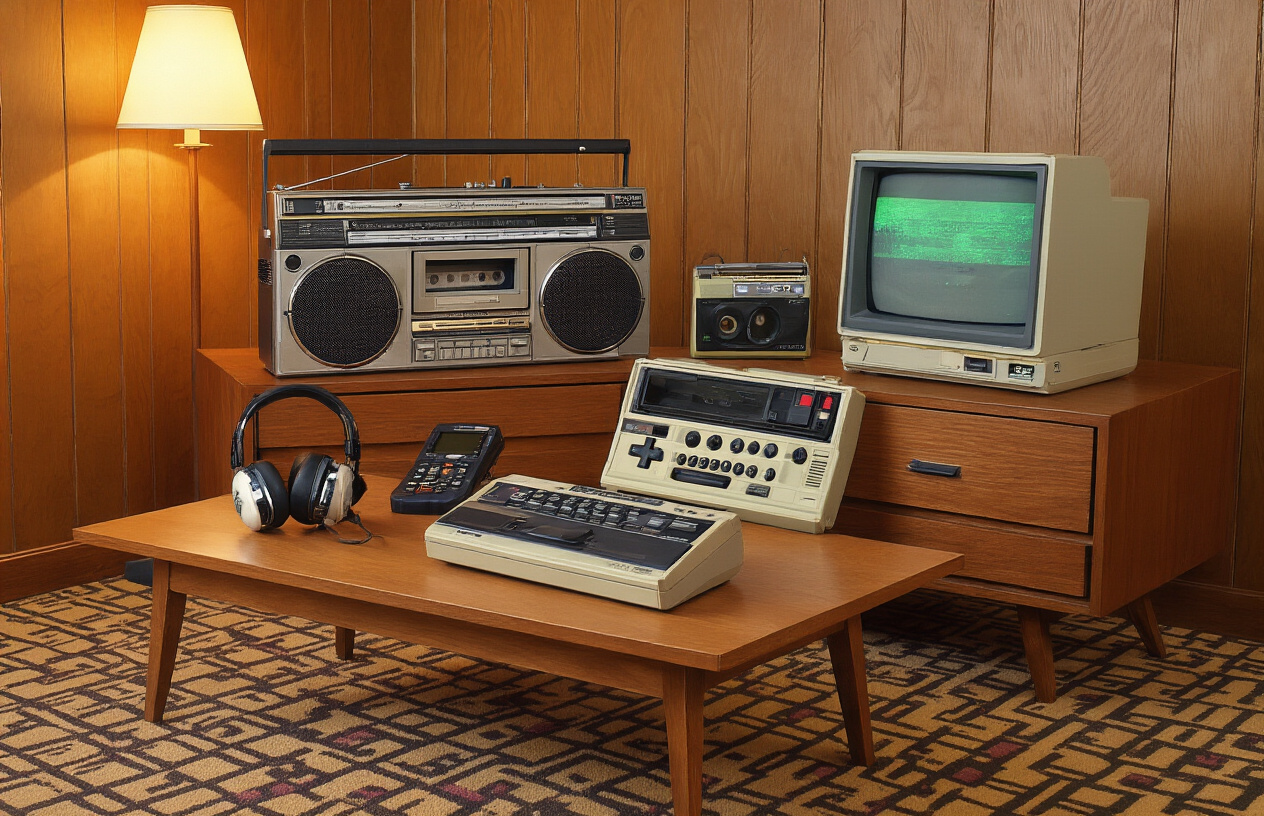
Nintendo Entertainment System Gaming Fails and Wins
The Nintendo Entertainment System would have been pure gold for 1985 TikTok viral content. Picture millions of people sharing their epic Mario death compilations – falling into those notorious pits in World 1-1 over and over again. The collective groans and controller throws would have created an entire genre of gaming fail videos that could easily rack up millions of views.
Super Mario Bros. speedrun attempts would dominate feeds, with players showing off their pixel-perfect jumps and warp zone discoveries. Those satisfying moments when someone finally beats Bowser after countless attempts would become the ultimate feel-good content. Even more viral would be the legendary “blowing into cartridges” ritual – everyone had their own technique, and the debates about whether it actually worked would spark endless duet videos.
Gaming win compilations featuring perfect Pac-Man runs, Donkey Kong high scores, and Tetris line clears would showcase the emerging competitive gaming culture. Players would film themselves discovering secret levels, sharing cheat codes, and celebrating those rare moments when they actually beat The Legend of Zelda without a guide.
VHS Recording Hacks and Movie Collection Tours
VHS recording hacks would have created a massive subculture of 1980s technology trends social media. Content creators would demonstrate the art of programming VCR timers to catch late-night movies, showing step-by-step tutorials for avoiding those dreaded “12:00” blinking clocks that haunted every household.
Movie collection tours would rival today’s bookshelf reveals. People would proudly display their carefully organized VHS libraries, complete with hand-written labels and custom cases. The satisfaction of a perfectly timed recording – catching a movie from HBO without any commercial interruptions – would generate thousands of “oddly satisfying” style videos.
Trading and copying techniques would spark their own viral trends. Creators would share methods for the cleanest dubs, demonstrate proper tape storage to prevent degradation, and show off their elaborate recording schedules. Those lucky enough to have multiple VCRs would become the ultimate content kings, showing off simultaneous recording setups that seemed like magic to single-VCR households.
Walkman Unboxing and Music Mix Recommendations
Walkman unboxing videos would have been the iPhone reveals of 1985. The careful removal of that pristine Sony Walkman from its box, the satisfying click of inserting the first cassette, and testing those foam headphones would create massive ASMR-style content before anyone knew what ASMR was.
Mixtape culture would absolutely explode on 1985 TikTok viral content. Creators would film themselves carefully curating the perfect blend of Madonna, Prince, and Duran Duran, showing off their tape deck skills and timing abilities to avoid cutting off songs mid-lyric. The artistry of creating seamless transitions between tracks would become a respected skill, with masters sharing their techniques for fade-outs and crossovers.
Music discovery content would thrive as people shared their latest finds from record stores, demonstrated proper cassette care techniques, and showed off portable speaker setups for group listening sessions. The ritual of flipping tapes, rewinding with pencils when players ate the tape, and the eternal struggle of untangling headphone cords would become relatable content that everyone could connect with.
Fashion and Style Challenges That Would Have Exploded
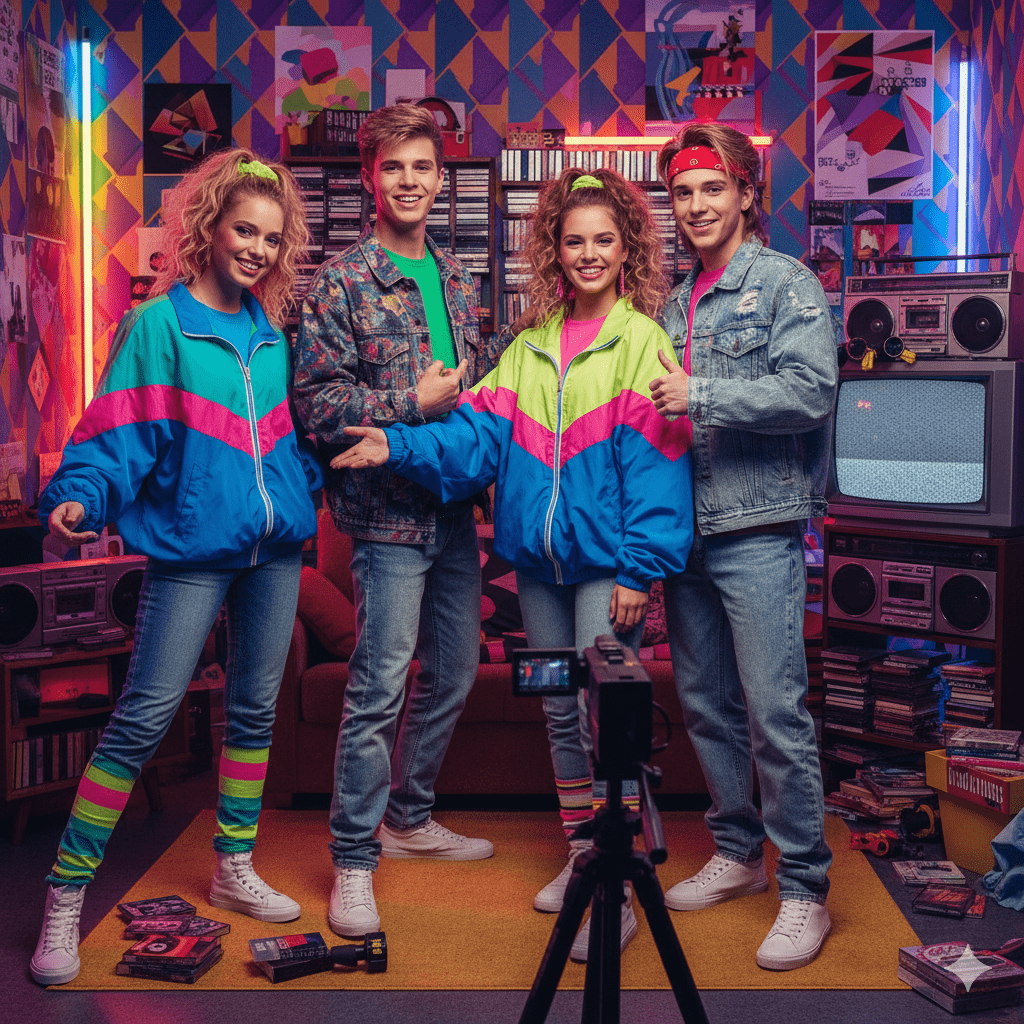
Big Hair Styling Tutorials and Competitions
The bigger the hair, the closer to God—and the more viral views you’d get on 1985 TikTok. Hair tutorials would absolutely dominate the platform, featuring step-by-step guides to achieving that perfect voluminous look. Creators would showcase their arsenals of hot rollers, crimping irons, and industrial-strength hairspray, walking viewers through the art of backcombing and teasing.
Competition videos would pit hairstylists against each other in timed challenges: “Who can create the tallest beehive in 60 seconds?” or “Rate my hair transformation—from flat to fabulous!” The most successful accounts would belong to salon professionals sharing trade secrets, like the perfect ratio of mousse to hairspray or how to make curls last through an entire Madonna concert.
Neon Color Coordination Outfit Challenges
Neon colors weren’t just a trend in 1985—they were a lifestyle. 1980s fashion trends would translate perfectly to viral challenges focused on electric color combinations. The #NeonChallenge would feature users creating head-to-toe looks using the brightest possible shades of pink, green, orange, and yellow.
Popular formats would include outfit transitions where creators start in muted colors and transform into walking highlighters. Color-matching challenges would push boundaries: “Can you match your eyeshadow to your leg warmers to your scrunchie?” The most creative videos would showcase unexpected neon pairings that somehow worked together, inspiring countless duets and response videos.
Power Suit Transformation Videos for Women
The rise of women in corporate America created a fashion revolution, and power suit transformations would become the ultimate empowerment content. These videos would show the dramatic shift from casual daywear to commanding boardroom presence, complete with shoulder pads that could knock someone over.
Creators would focus on the psychology of power dressing, demonstrating how the right blazer changes your entire posture and attitude. Quick-change challenges would feature women switching from homemaker to CEO in seconds, while styling videos would show how to accessorize power suits for maximum impact. The most viral clips would combine fashion with feminist messaging, turning getting dressed into a statement about breaking glass ceilings.
Breakdancing Outfit Reveals and Move Demonstrations
Hip-hop culture was exploding in 1985, making breakdancing content pure social media gold. Dancers would create epic reveal videos, starting in street clothes before spinning into full breaking gear: tracksuits, sneakers, and cardboard for the perfect stage. The outfit reveal would lead directly into move demonstrations, teaching viewers how to master the windmill or perfect their top rock.
Competition between crews would drive massive engagement, with dancers responding to each other’s videos with increasingly complex routines. Tutorial series would break down iconic moves step by step, while fashion-focused content would showcase the evolution of breaking style—from Adidas tracksuits to custom gear that could handle serious floor work.
Rubik’s Cube Speed-Solving While Wearing Leg Warmers
The Rubik’s Cube craze meets 1980s fashion in the most oddly specific viral trend imaginable. Speed-solving challenges would feature competitors racing against the clock while sporting the decade’s most iconic accessory: leg warmers. The visual contrast between intense mental focus and casual athletic wear would create irresistible content.
These videos would spawn countless variations: solving while wearing different colored leg warmers, cube-solving fashion shows, and multi-tasking challenges where creators coordinate their cube colors with their warmer patterns. The community would develop its own subculture, with top solvers becoming fashion influencers and leg warmer brands sponsoring tournaments. The absurdity would only fuel its popularity, proving that sometimes the most random combinations create the most memorable vintage viral videos.
Social and Political Moments Ripe for Viral Commentary
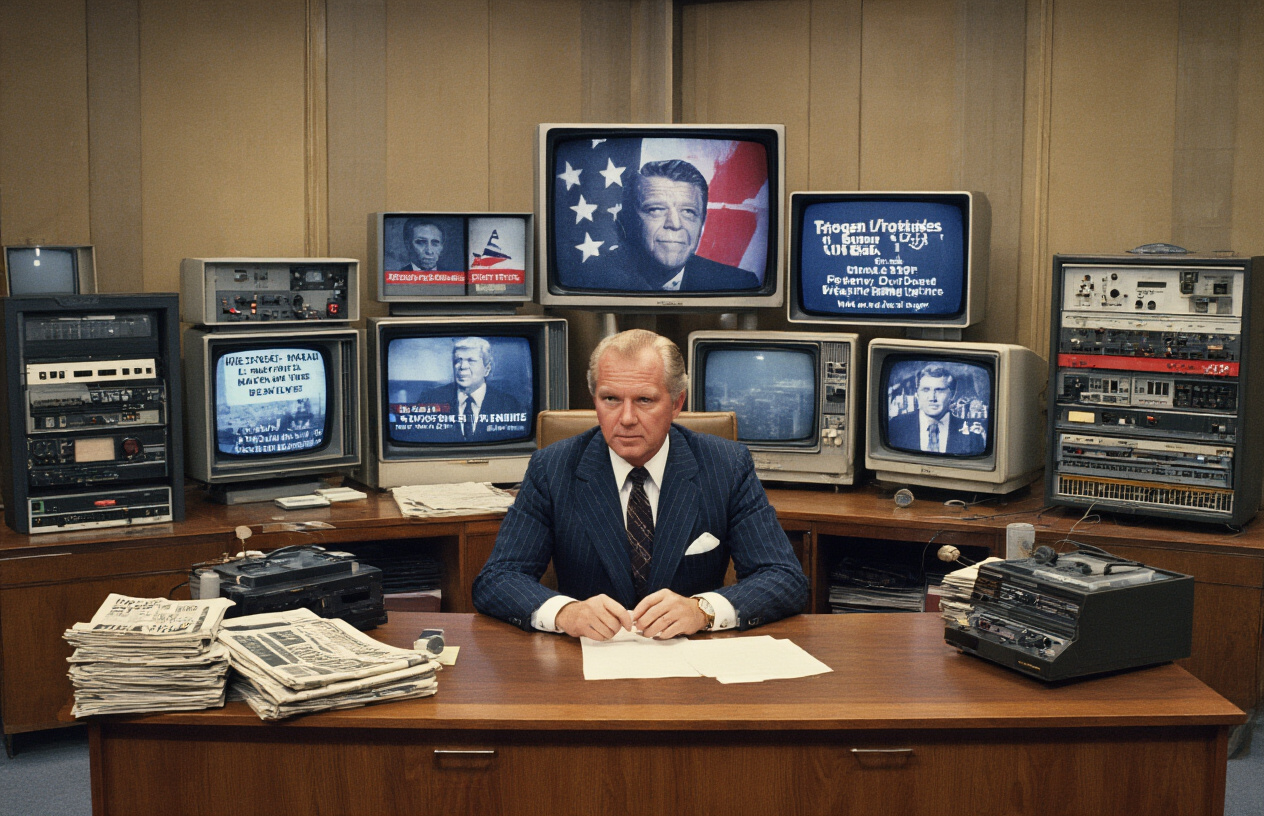
Berlin Wall Graffiti Art Creation Time-lapses
Picture creators setting up their cameras near Checkpoint Charlie, capturing spray paint hitting concrete in mesmerizing fast-forward sequences. Artists would have turned the Berlin Wall into the ultimate canvas for 1985 TikTok viral content, with time-lapse videos showing colorful murals emerging from gray concrete. The raw emotion and political defiance captured in these artistic expressions would have resonated deeply with viewers worldwide.
West Berlin artists could have used portable video equipment to document their rebellious artwork, creating compelling before-and-after transformations. These videos would showcase not just artistic skill but also the courage required to create art in such a politically charged location. The symbolism of covering communist barriers with vibrant Western creativity would have made these clips incredibly shareable.
Underground art movements would have gained massive followings through these behind-the-scenes glimpses of counter-culture resistance. Each graffiti session would tell a story of freedom, creativity, and political protest that transcended language barriers. The Berlin Wall represented the ultimate backdrop for viral political art commentary.
Reagan Administration Policy Reactions and Parodies
Political satire would have exploded on 1985 social media platforms, with creators mimicking Reagan’s distinctive speaking style and hand gestures. His “Morning in America” optimism would have sparked countless reaction videos and comedic interpretations. Young creators would have crafted elaborate sketches parodying supply-side economics, complete with props and costumes.
The Star Wars Strategic Defense Initiative would have generated endless meme content, with creators using household items to mock the ambitious missile defense system. Political commentary through humor would have made complex policy discussions accessible to younger audiences. Reagan’s Hollywood background would have provided rich material for entertainment-focused political content.
Conservative and liberal creators would have battled through dueling video responses, creating the first major political discourse wars on social media. The administration’s anti-drug campaigns would have inspired both serious PSA parodies and absurd comedy sketches, showing how political messaging could be transformed into viral entertainment.
Cold War Tension Comedy Skits and Cultural Commentary
Comedy creators would have turned nuclear anxiety into viral gold through absurd survival tip videos and fallout shelter fashion shows. The existential dread of potential nuclear conflict would have been processed through dark humor and satirical content. Creators would have made light of duck-and-cover drills with exaggerated demonstration videos.
Cultural exchanges between East and West would have been highlighted through side-by-side comparison videos showing different lifestyles, music, and fashion trends. These glimpses behind the Iron Curtain would have satisfied curiosity about life in communist countries. Spy movie parodies would have dominated comedy content, with creators recreating famous espionage scenes using everyday objects.
The contrast between American capitalism and Soviet communism would have provided endless material for educational yet entertaining content. Creators would have used humor to explain complex geopolitical situations, making the Cold War more understandable for their peers. Dance battles between capitalist and communist countries would have become unexpected viral sensations, turning political tension into creative competition.
Everyday Life Hacks That Would Have Gone Mainstream
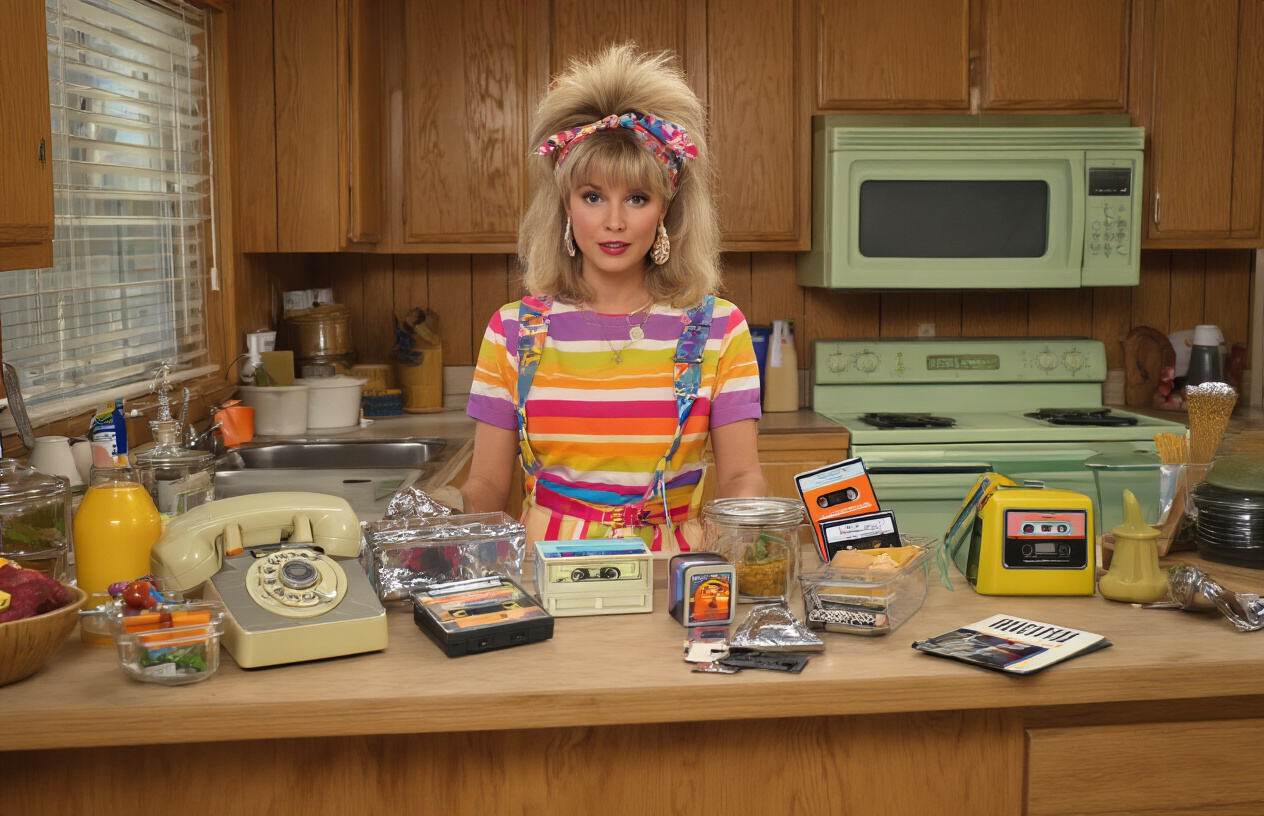
Dial-Up Phone Prank Calls and Comedy Routines
Phone pranks would have been absolute gold on 1985 TikTok. Picture teenagers recording themselves calling random numbers and asking “Is your refrigerator running?” or pretending to be pizza delivery drivers calling the wrong house. The comedy potential was endless, especially with those distinctive rotary and push-button phone sounds that would become nostalgic audio clips.
Creative pranksters would have developed elaborate characters and voices, perhaps calling businesses to ask about imaginary products or services. The beauty of 1985 phone pranks was their innocence compared to today’s standards – most were harmless fun that genuinely made people laugh. Users would have shared their best one-liners and reaction compilations, with the most creative scenarios getting millions of views.
Comedy routines featuring phone conversations with parents, siblings, or friends would have exploded in popularity. Imagine viral sketches about trying to get off the phone with your grandmother, or the panic of accidentally calling your crush’s house and having their dad answer.
Aerobics Workout Routines Set to Popular Music
The aerobics craze was perfectly timed for 1985 social media success. Home workout videos featuring high-energy routines set to Madonna, Duran Duran, and Prince would have dominated feeds everywhere. Picture Jane Fonda-inspired instructors leading viewers through leg warmers-and-leotard workouts in living rooms across America.
These 1980s fitness trends would have spawned countless dance challenges and workout competitions. Users would have created their own choreographed routines to “Flashdance” or “Footloose,” competing to see who could nail the most complex moves while maintaining that classic 80s enthusiasm.
The accessibility factor would have been huge – no expensive gym memberships required, just your favorite cassette tape and enough space to move around. Fitness influencers would have built massive followings by making workouts fun and approachable, often featuring colorful spandex outfits and energetic personalities that matched the upbeat music.
Mall Food Court Taste Tests and Reviews
Mall culture was at its absolute peak in 1985, making food court reviews perfect viral content material. Teenagers would have become micro-celebrities by rating everything from Orange Julius smoothies to Sbarro pizza, creating detailed taste test videos comparing different vendors.
The social aspect would have been irresistible – groups of friends trying bizarre food combinations, reviewing the latest Cinnabon flavors, or attempting to eat at every food court restaurant in one day. These videos would have captured the quintessential 1985 teenage experience while providing genuine entertainment value.
Seasonal mall treats would have created their own viral moments. Think pumpkin spice treats before pumpkin spice was mainstream, holiday cookie reviews, and summer frozen treat comparisons. The authentic reactions and honest reviews would have built trust with viewers, making certain food court recommendations legendary within the platform.
Arcade Game High Score Achievement Celebrations
Arcade culture would have translated perfectly to 1985 TikTok, with gamers filming their high score moments and epic reactions. Picture someone finally beating their personal best on Pac-Man or Galaga, complete with authentic 80s celebration moves and genuine excitement.
The competitive element would have been incredible – users challenging each other to beat specific scores, sharing strategies for mastering different games, and creating tutorials for complex moves. Street Fighter combos, Donkey Kong barrel-jumping techniques, and pinball machine mastery would have become specialized content niches.
Arcade visits would have become social events worth documenting. Groups of friends pooling their quarters, attempting to beat the high score holder whose initials were permanently displayed on the machine, and the pure joy of achieving arcade greatness would have resonated with millions of viewers. The authentic 1980s gaming experience, complete with the sounds of classic arcade machines and the atmosphere of dimly lit game rooms, would have created incredibly engaging vintage viral videos that captured a unique moment in gaming history.
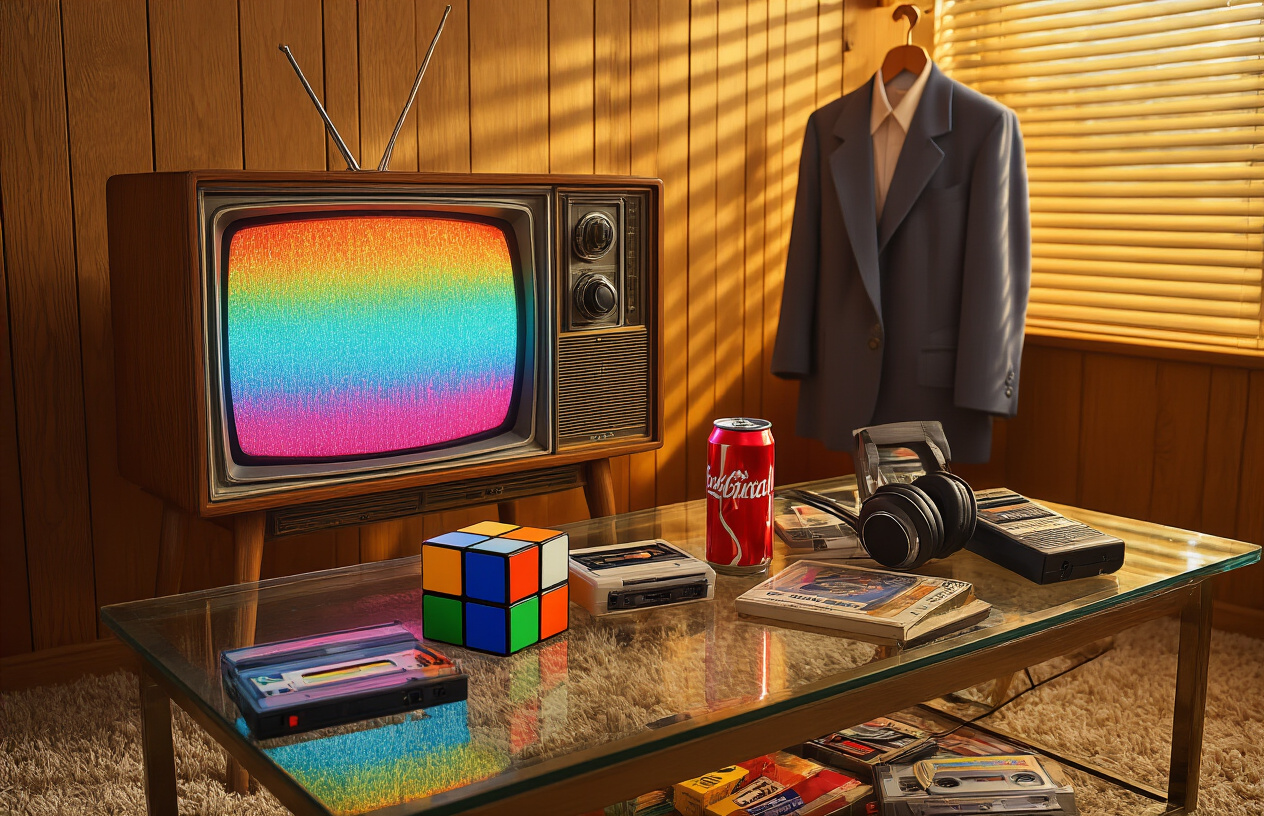
The 1980s were packed with moments that practically begged for viral fame. From Madonna’s boundary-pushing performances and the Rubik’s Cube craze to the launch of Windows 1.0 and the rise of personal computers, 1985 had all the ingredients for TikTok gold. Add in the bold fashion statements like shoulder pads and neon everything, plus major events like Live Aid and the Coca-Cola disaster, and you’ve got endless content opportunities that would have had everyone glued to their screens.
What’s really fascinating is how timeless human nature is when it comes to sharing moments that excite, inspire, or shock us. The same impulses that drive us to create and consume viral content today existed back then – we just didn’t have the platform for it. Next time you’re scrolling through your feed, think about what from today might seem just as wonderfully ridiculous to someone looking back from 2060. Start creating content that captures the unique spirit of our times, because these everyday moments you’re living right now are tomorrow’s nostalgia.
